Danesfort (Loughrea)
Houses within 10km of this house
Displaying 49 houses.
Houses within 10km of Danesfort (Loughrea)
Displaying 49 houses.
| House name | Description | |
|---|---|---|
| Bookeen Glebe | Burton Persse was leasing this house to Rev. Robert Graham at the time of Griffith's Valuation. In the nineteenth century, the house was used as the residence of the incumbent at Bookeen Church. It was later purchased by the Aitken family who had served as Land Agents for the Clancarty estate at Coorheen, outside Loughrea. The house has been renovated and is extant and occupied. |

|
| Dunsandle | A large house built in the later 18th century for Denis Daly, M.P. Wilson refers to it in 1786 as "the most magnificent and beautiful seat, with ample demesnes". It was held in fee by Lord Dunsandle at the time of Griffith's Valuation, when it was valued at £70. In 1894 Slater refers to it as the seat of William Daly. Dunsandle House was sold in 1954 and demolished in 1958 although portions of the walls are still standing. Evidence of both the stable yard and walled garden still exists also. |
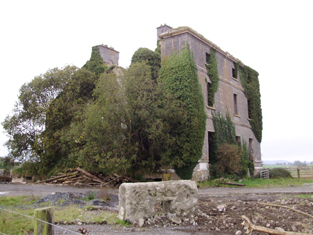
|
| St. Cleran's or Issercleran | Issercleran or St.Clerans was the home of the Burke family who built the house c.1784. At the time of Griffith's Valuation it was owned by John Hardiman Burke and was valued at £45. In 1906 it was the property of Anne Maxwell (nee Burke) and was valued at £46. It was sold in the 1950s and became the home of film director, John Huston. Up until 2008 it functioned as a luxury hotel owned by the Griffin Group. |

|
| Masonbrook | Masonbrook was originally the seat of the Mason family but was later bought by the Smyth estate. At the time of Griffith's Valuation it was occupied by James Smyth and was valued at £60. It is recorded in the Valuation and the 1906 report on Untenanted Demesnes as located in the townland of Moanmore East but is shown in the townland of Masonbrook on the 1st edition OS Map of 1842. In 1906 it was valued at £60. It is not shown on the 25-inch edition Ordnance Survey map and is no longer extant. |

|
| Gammahoe Cottage | A smaller property on the Persse estate, possibly a steward's house, with 257 acres in 1855. There is no trace of a house at this location now although there is some evidence of farm buildings and garden walls. | |
| Benmore | In 1778 this was a Daly property and in 1786, Wilson also refers to it as the seat of Mr. Daly. In 1824 Mr. O'Connor was listed as a non-resident proprietor in county Galway. The OS Name Books record the proprietor of Benmore as Hugh O'Connor with a Mr. Dowdall acting as his agent in the 1830s. In 1855 Valentine O'Connor Blake was leasing 584 acres and buildings valued at £8 in the townland of Benmore, parish of Grange, barony of Loughrea, to Denis Deely. The original house does not appear to be extant. | |
| Lynchfort House | Martin J. Lynch was occupying this house at the time of Griffith's Valuation when it was valued at £10. Lynchfort House is still extant and in good condition though it is not clear if it is continuously occupied. |

|
| Ballynahivnia | Lord Dunsandle is recorded as the lessor of 161 acres and a complex of buildings, including a mill, valued at £18, in the townland of Ballynahivnia, in 1855. The substantial remains of a tower house, together with the foundations of the mill building remain at the site, close to Riverville Bridge. |

|
| Abbeyville | At the time of Griffith's Valuation this property was held in fee by Thomas H. Pilkington and valued at £7. It is still extant. |

|
| Glenville | The Earl of Clancarty was leasing a house valued at £12 in Cahercrea East to Margaret Daly in 1855. This house is still extant and now known as Glenville. In the adjoining townland of Ballycoony Clancarty was leasing a house valued at £4 as well as 118 acres to John Hardy. |
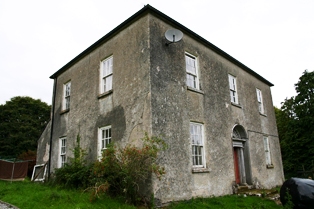
|
| Woodmount House (Loughrea) | The 1st edition OS map indicates Woodmount House at Knockadikeen, barony of Loughrea. At the time of Griffith's Valuation James Smyth was leasing this townland from the Clanricarde estate. The property included a herds' and labourers' houses valued at £2. | |
| Ballybroder | In 1814 Ballybroder was the seat of Henry Burke. Ballybroder was recorded as the property of Mr. Burke in the 1830s. In 1855 Patrick Burke was leasing the house at Ballybroder from Peter Dolphin. In 1906 Eleanor M. Burke is recorded as the owner when the house was valued at £10. The house at Ballybroder is still extant and in reasonable repair but unoccupied. |

|
| Wallscourt | Wallscourt House is described as "in ruins" on the 1st edition 6" OS map. Very little now remains of it except for one chimney. |

|
| Dartfield | The home of R. Blake in the 1830s. By the time of Griffith's Valuation, Dartfield was the property of Maria L. Blake and was valued at £28. Later occupied by Geoghegans, Hardys and now home to the horse museum run by the Leahy family though the house itself is largely ruinous. |

|
| Tooloobaun House | At the time of Griffith's Valuation, Henry Hudson was leasing this house, then valued at almost £4, from John R. Hudson/Hodson. It is not shown on the later 25-inch Ordnance Survey map of the 1890s. | |
| Rathville | At the time of Griffith's Valuation, John Blake was the holder of a property at Carrowreagh, barony of Athenry, valued at £10. Rathville House is still extant and occupied. In 2013 it was offered for sale. |

|
| Raford | The National Inventory of Architectural Heritage suggests that Raford House was built c.1760. Wilson refers to it as the seat of Captain Daly in 1786. It was being leased by Denis Bodkin from Harriett Daly at the time of Griffith's Valuation, when it was valued at £40. John Archer Daly was the owner of Raford House in 1906 when it was also valued at £40. Raford is still extant and occupied. Modern development has taken place on part of the demesne lands. |

|
| Kilchreest Glebe | Rev. William O'Grady was leasing this property from the Persse estate & John & Eliza Gloster. It was originally church lands. In 2006 this property was still extant and was offered for sale together with a property known as Killinan House nearby. |

|
| Millmount House | Thomas Phayre was leasing this property from the Earl of Clancarty's estate at the time of Griffith's Valuation. It also included a mill, herd's house and 150 acres. The National Inventory of Architectural Heritage suggests it was built in the 1760s. It is still extant and occupied. |
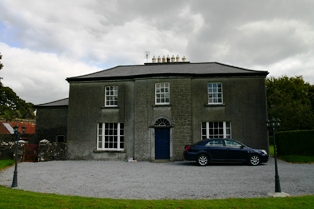
|
| Streamstown House(Tynagh) | Michael McDermott was the occupier of Streamstown House at the time of Griffith's Valuation when it was valued at £12. In 1783 Taylor and Skinner recorded a house at Ballindrimney as the seat of the Lambert family. The house is still standing but derelict. |

|
| Dalystown/Dalyston | Built for the Daly family in the mid-18th century it later became the seat of Charles O'Farrell. In 1906 it was valued at £50. It was stripped of its fittings in the early 1960s and is now a ruin. Crossbaun burial ground (M664116), located nearby, contains the mausoleum of Denis and Charlotte Bowes Daly. |
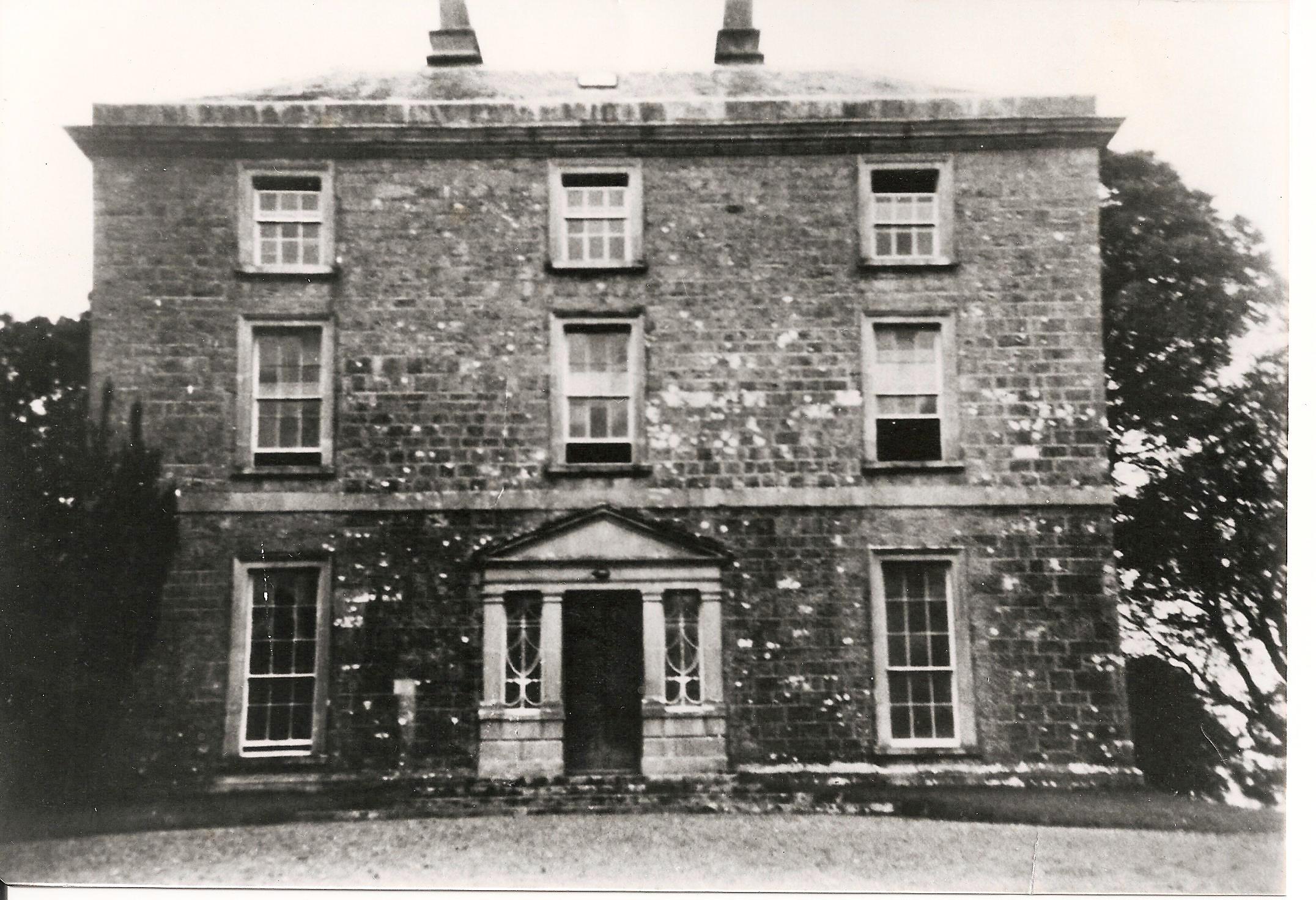
|
| Carrowkeel | James U. Burke was leasing the house at Carrowkeel from Charles Farrell at the time of Griffith's Valuation when it was valued at £9. In the 1830s the Ordnance Survey Name Books mention "a good dwelling and ornamental grounds" in the townland of Carrowkeel. It is still extant and occupied. |
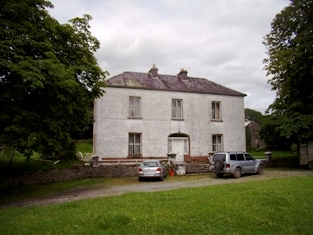
|
| The Cottage | At the time of Griffith's Valuation, Patrick Trumple was leasing this house, in the townland of Cloonmain, parish of Killoran, from the Clonbrock estate. It is still extant and occupied. |
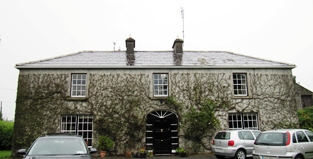
|
| Ballydugan | In 1786 Wilson refers to Ballydugan as the seat of William Burke. Rev. Michael Burke was the owner of Ballydugan at the time of Griffith's Valuation, when it was valued at £24. In 1906 Michael H. Burke owned the mansion house at Ballydoogan then valued at almost £27. It was burnt in 1922 but rebuilt, with modifications, in 1929. Much of the family and estate archives were destroyed in the fire of 1922. Ballydugan is still extant and occupied. |
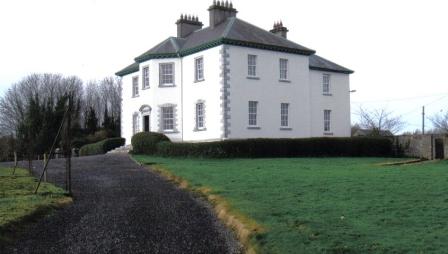
|
| Rafarn House | At the time of Griffith's Valuation, Rafarn House was leased from the Clanricarde estate by Thomas Tully and was valued at £17 and was accompanied by over 400 acres. In 1814 it was recorded as the residence of Joseph Tully. It is still extant. |

|
| Cooleeney/Coolinny/Cooleeny | At the time of Griffith's Valuation this property was occupied by James Daly and was valued at £15. When offered for sale in February 1863 the house was occupied by Eleanor M. Lynch. In 1906 it was in the possession of John J. Smyth of Masonbrook and was valued at £20. Cooleeney is still extant and occupied. | |
| Brooklawn | Labelled Brooklawn House on both the First and 25-inch editions of the Ordnance Survey map though the buildings are slightly apart. In 1837 this house was the residence of a branch of the Blake family. At the time of Griffith's Valuation the house was leased to Michael McDermott by Thomas J. Blakely [sic]. It is no longer extant. | |
| Hollyhill | At the time of Griffith's Valuation Hollyhill house was the residence of Arthur Daly. Lewis recorded it as the seat of P. Kelly. In 1814 it was occupied by D. Shaughnessy. Michael J. Daly, owner of over 700 acres, was resident there in the 1870s. In 1906 it was owned by Denis B. Daly when it was valued at £9. It is still extant and occupied. | |
| Ballydonnellan Castle | At the time of Griffith's Valuation, Ballydonnellan Castle was occupied by John D. Mahon and was valued at £62. It was still extant in the 1890s but is described as "in ruins" on the 1933 edition of 6" map. These ruins are still visible. |

|
| Eastwell | In 1837 Lewis records Eastwell as the seat of C. Usher. At the time of Griffith's Valuation it was occupied by Christopher Usher and the buildings were valued at £79. By 1906 it was in the ownership of William A. Usher and was valued at £81. This house is no longer extant but extensive remains of stables, demesne and walled garden survive. |
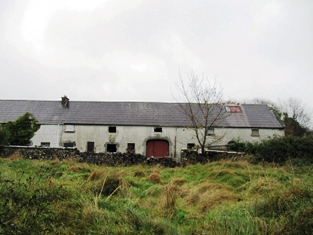
|
| Rathglass | In 1814 Rathglass House was the residence of Bernard Rochford. In November 1850 Mark Lynch was occupying the house. At the time of Griffith's Valuation it was occupied by James M. Bourchier. It is still extant. |
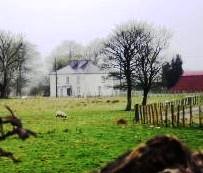
|
| Killimer Castle | Originally a tower house, Killimor Castle was modernised in the early 1700s by the addition of two slated wings. The Dalys continued to reside there until the end of the 18th century when the castle and demesne were leased to Dominick Burke of Slatefield. In 1837 Lewis records it as the seat of Hyacinth Burke. Dominick J. Burke was still leasing the house at Killimor from Rev. Nicholas Devereux at the time of Griffith's Valuation. It was then valued at £16. The house at Killimordaly had fallen into disrepair but has been restored. |

|
| Grousehill House | Patrick Murphy was leasing 66 acres and buildings valued at over £1 from the Earl of Huntingdon's estate at Killeenadeema West, barony of Loughrea, at the time of Griffith's Valuation. This includes the property described as Grousehill House, in the same townland, on the 1st edition OS map. The house is not recorded on the later 25-inch map. A modern building exists at the site. | |
| Burkeville | Burkeville was offered for sale in the Encumbered estates court in July 1852. At the time, Maurice Bennett was the tenant of this "fine commodious dwelling house". At the time of Griffith's Valuation it was held by Nicholas Coolaghan and valued at almost £10. It was still in the possession of Nicholas Coolaghan in 1906. A house still exists at the site. | |
| Ashbrook | In June 1854 William Kelly was recorded as the owner of the property at Ashbrook, formerly Bouilagh, parish of Killaan, barony of Kilconnell. At the time of Griffith's Valuation the house at Ashbrook, valued at £20, was the residence of Charles B. Lynch. It is no longer extant. | |
| Caraunbeg | Obadiah Holland was leasing a house valued at £8 and over 240 acres at Caraunbeg, parish of Killimordaly, barony of Kilconnell, from Lord Ashtown at the time of Griffith's Valuation. It is no longer extant. | |
| Caraunmore/Anneville | Rev. Joseph Seymour was leasing a house valued at £9 together with over 350 acres at Caraunmore, parish of Killimordaly, from the Ashtown estate at the time of Griffith's Valuation. This is possibly the house which Lewis records as Anneville, the seat of Rev. J. Seymore, in 1837. It is now a ruin. | |
| Kiltullagh House | In 1786 Wilson mentions "Kiltolla" as the seat of Patrick D'Arcy. Lewis records Kiltullagh House as the seat of J. D'Arcy in 1837. At the time of Griffith's Valuation, Pierce Joyce held a herd's house here valued at almost £4. It is described as "in ruins" on the 25-inch Ordnance Survey map of the 1890s and these ruins are still extant. |

|
| Lime Hill | Patrick Egan was leasing property valued at £13 including a mill and over 100 acres, at Limehill, barony of Leitrim, county Galway, at the time of Griffith's Valuation. This was part of the Clancarty estate. The house is labelled Limehill House on the 25-inch Ordnance Survey map of the 1890s. It is still extant. |
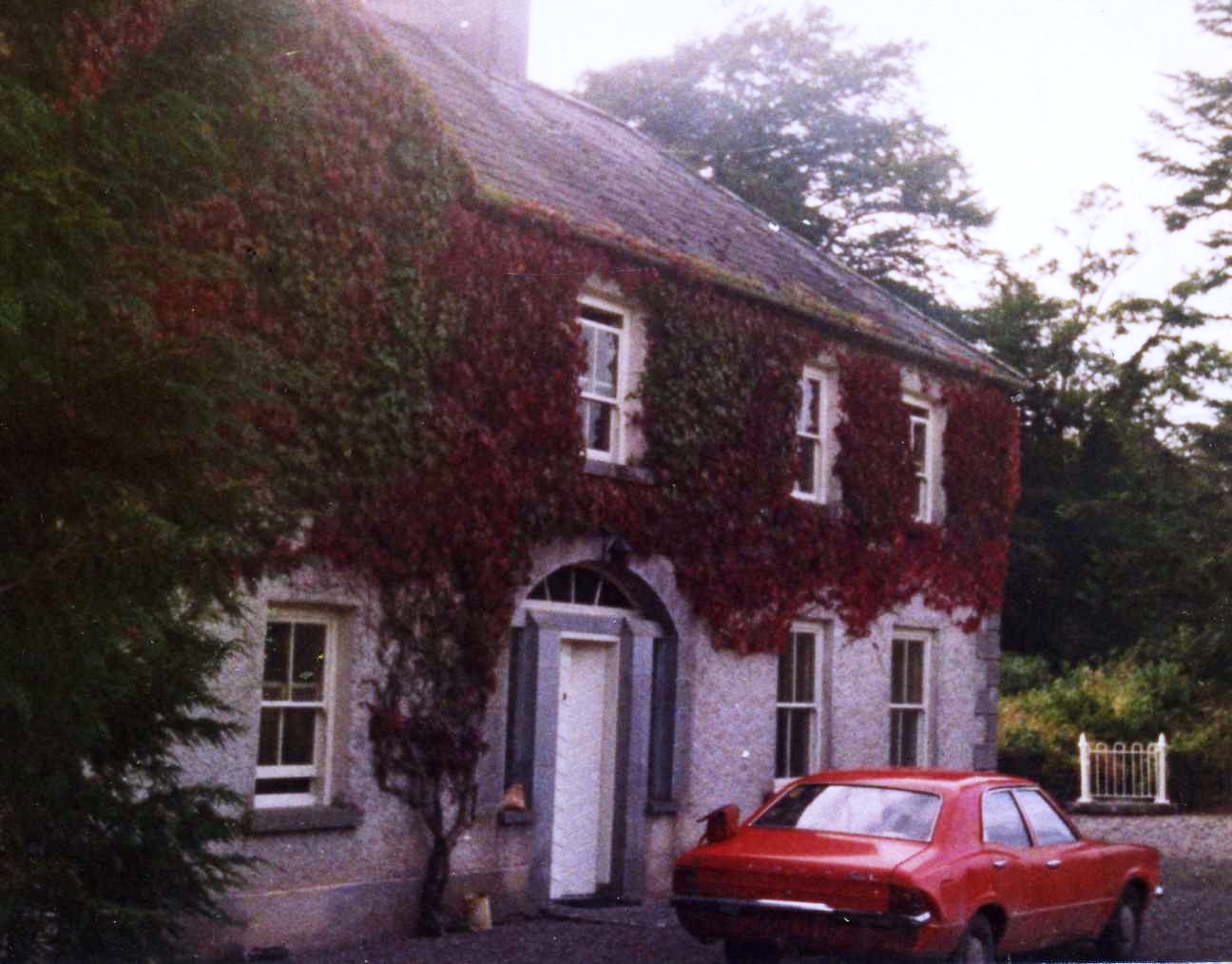
|
| Carrowroe House | In 1786, Wilson refers to "Carrorowe, at present uninhabited". At the time of Griffith's Valuation, John Dennis was leasing a property at Carrowroe North, barony of Athenry, valued at £15, from Lord Dunsandle's estate. Buildings remain at the site. |

|
| Ballyargadaun | In 1906 Charles O'Farrell was the owner of a house valued at £4 at Ballyargadaun, barony of Leitrim, county Galway. This may be the gatelodge at the entrance to the Dalystown demesne or may be buildings associated with the plant nursery in the same townland. {Grid Reference is for gate lodge] | |
| Gortakeeran | John A. Daly owned buildings valued at almost £8 at Gortakeeran in 1906. At the time of Griffith's Valuation this townland was owned by John B. Daly including a herd's house valued at 15s. | |
| Abberanville | Abberanville House is descibed as "in ruins" on the 1st edition OS map. The townland, containing 24 acres, was part of John B. Daly's estate and was leased to John Blake when the buildings were valued at £15s. The ruins of a hemp factory were located nearby. There are no buildings at the site now. | |
| Curheen House | Sometimes known as Coorheen House. In 1786 Wilson refers to Curheen as the seat of Mr. Loftus. At the time of Griffith's Valuation, this was a small property occupied by Andrew Egan, leasing from the Clancarty estate and valued at £1 5s. Extended and enlarged sometime after this, by the 1890s it had become Curheen House, resided in by the Aitken family, agents for the Clancarty estate. Later the residence of the RC Bishop of Clonfert. |
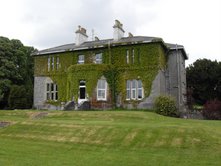
|
| Newgrove House | In 1786 Wilson refers to Newgrove as the seat of Mr. Blake. At the time of Griffith's Valuation, the property is described as a care-takers house, and leased to John H. Blake by the Wallscourt estate. It is labelled Newgrove House on the 1st edition Ordnance Survey map but is described as "in ruins" on the later 25-inch map of the 1890s. | |
| Summerhill House (Loughrea) | In 1786 Wilson writes that Summerhill House, on the outskirts of Loughrea, was the seat of Mr. Persse. By the time of Griffith's Valuation in the 1850s, the property was occupied by Henry Dolpin, leasing from the Clanricarde estate, when it was valued at almost £8. Parts of the building have disappeared by the 1890s and the site is now part of a school. | |
| Mount Pleasant (Loughrea) | In 1786 Wilson writes that Mount Pleasant was the seat of Mr. Daly. At the time of Griffith's Valuation, the townland was in the possession of the Clanricarde estate but the only building with substantial valuation was the militia barracks. The house is no longer extant though the area is still known as Mountpleasant. |
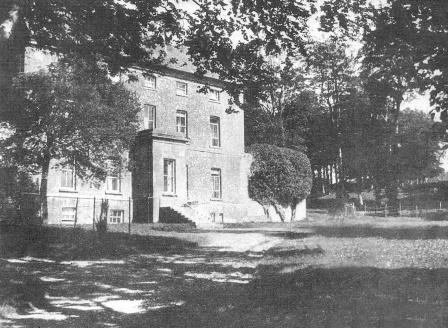
|
| Cottage (Loughrea) | In 1786 Wilson refers to Cottage as the seat of Mr. Varo [?]. At the time of Griffith's Valuation, the property was leased by Bryan Rynn from the Clanricarde estate and valued at £4. The original house is no longer extant. | |
| Fortlands House (Loughrea) | In 1786 Wilson refers to a charter-school at Loughrea and this premises is labelled on the 1st edition Ordnance Survey map. However, by the time of Griffith's Valuation, it appears to have reverted to use as a house, leased by John Smyth from the Clanricarde estate and valued at £11. The house at this location is labelled Fortlands House on the 25-inch Ordnance survey map of the 1890s. A house is still extant at the site. |

